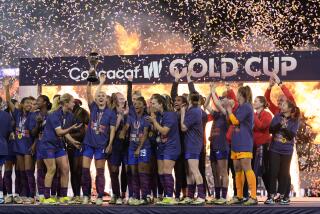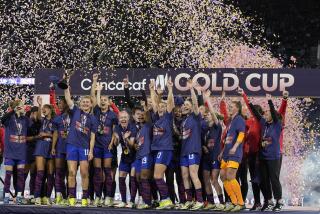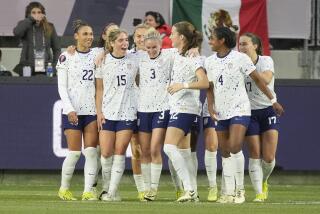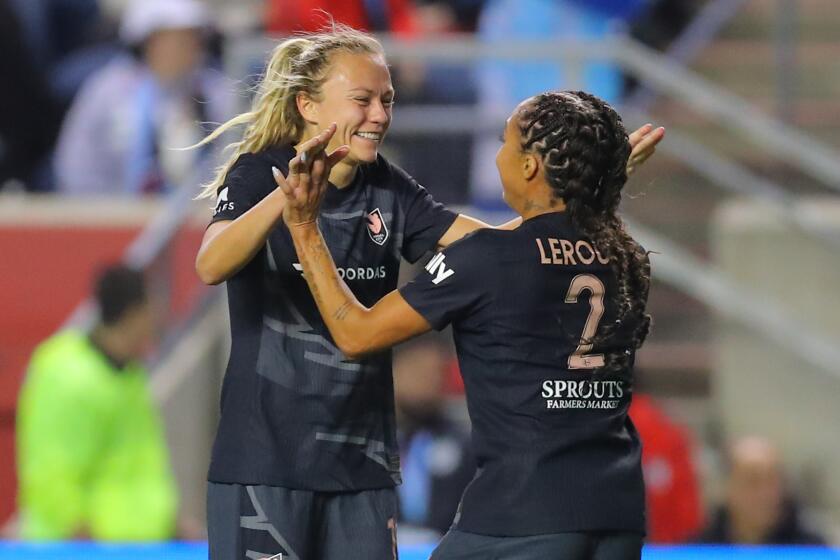Jill Ellis invites the world to come to the U.S. to make the national team better
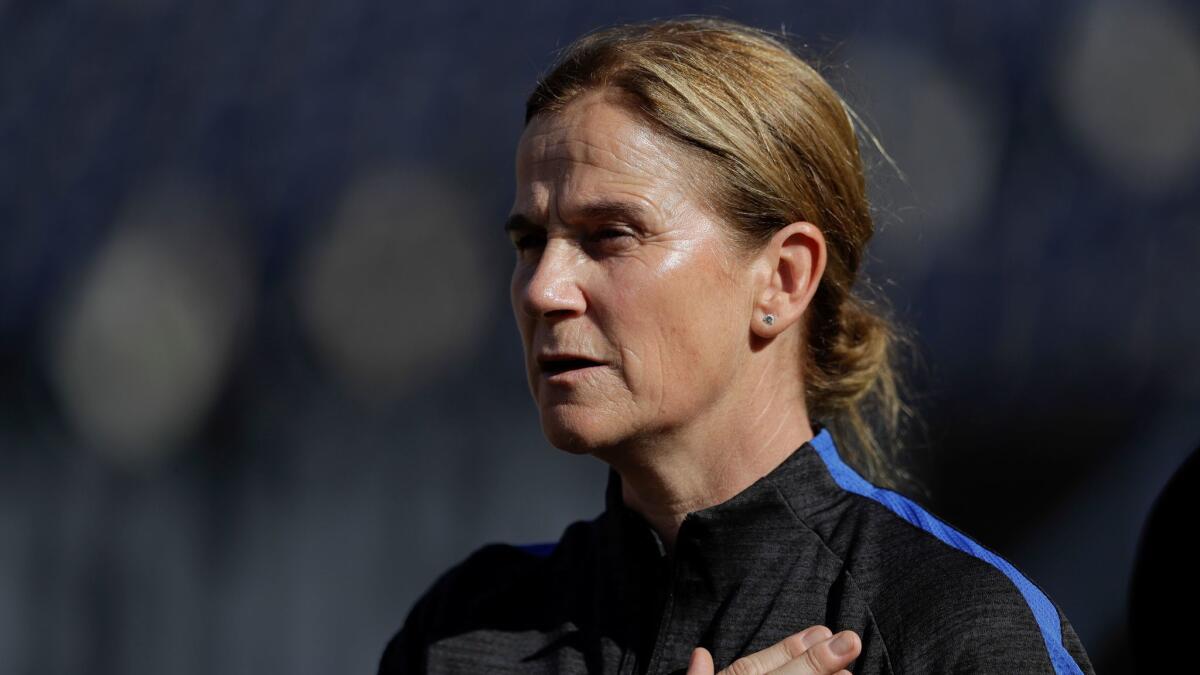
Jill Ellis studied literature in college. But you don’t need a medical degree to know that unexercised muscles will eventually lose their strength.
The same goes for teams. So when Ellis, coach of the U.S. women’s soccer team, took stock of her program following the 2015 World Cup, some of what she found worried her.
The U.S. was the reigning world champion, ranked No. 1, was in the midst of a 25-game unbeaten streak and hadn’t lost at home in 11 years. But the Americans were beginning to atrophy.
The year before they had played just five teams ranked among the world’s top 10. Against the others, it won two games by scores of 8-0, two more 7-0 and outscored its 24 opponents by a combined 79-15.
Ellis didn’t see that as evidence of a dominant team but of an untested one.
So last year Ellis and U.S. Soccer started their own tournament, the SheBelieves Cup, and invited England, France and Germany to participate. Ellis and the federation doubled down on that idea this summer by creating a West Coast event, the Tournament of Nations, which concludes Thursday at StubHub Center. Australia plays Brazil at 4:15 p.m. and the U.S. meets Japan in a rematch of the 2015 Women’s World Cup final at 7 p.m.
Unbeaten Australia, ranked No. 7 in the world, can win the tournament by beating or holding No. 8 Brazil to a draw. For the U.S. to win, it must make up a three-goal differential while beating No. 6 Japan and having Australian lose.
“Ultimately, what the coaches care about are two things,” Ellis said. “They care about quality opponents and that their players get an experience that they would get as they go into a World Cup environment, which means 15,000-20,000 people in the stands.
“We kind of provide that experience. That’s why they come.”
The tournaments were essentially created to replace Portugal’s Algarve Cup, a 23-year-old competition that has traditionally been the most important event on the women’s calendar in years between the Olympics and the World Cup.
But because the Algarve is a 12-team event, the field is often watered-down. The last time the U.S. played in Portugal, in 2015, it didn’t play a top 10 team until the final.
“You go there and you maybe end up playing one or two of the top 10 teams in the world,” Ellis said. “Here we’re guaranteeing that we’re getting these matches. It’s just where we are in our development.”
According to statistics compiled by FIFA, there are more women playing organized soccer in the U.S. than in Africa, Asia, South America and Oceania combined.
Women’s soccer is followed more closely here as well. In the two tournaments the U.S. has hosted this year, three of the four doubleheaders drew crowds in excess of 21,000. Compare that to the women’s Euros, which will conclude this weekend in the Netherlands. There, 18 of the 24 group games drew fewer than 7,000 people and a match between Russia and Italy reportedly drew less than 700.
“A lot of these teams that want to come over here, it’s not only are they getting quality games in good stadiums but they’re experiencing a fan base, an atmosphere,” Ellis said.
“We always wanted to be at the forefront of developing the game. In the international arena it’s recognizing our part.”
Marta, Brazil’s five-time FIFA player of the year, says the rest of the world looks to the U.S. to play that role.
“I’ve always seen the importance that the women’s game has in the United States,” said Marta, who played three seasons in two U.S. leagues between 2009 and 2011, then returned this season with Orlando of the National Women’s Soccer League. “That is a big deal for everyone. Many countries can put tournaments together and many of them are being more and more successful.
“But when it’s done here in America, we know that’s really well-planned and executed and the results are always good.”
In the short-term the results haven’t been particularly good for the U.S. The Americans lost three of their first five games in the two tournaments they hosted this year, one more than they lost in the last two years combined.
Ellis sees that not as a failing of the team but as evidence that the women’s game is improving everywhere. And that’s something she wanted to promote from the day she took over as coach of the U.S. team three years ago.
“There is parity,” she said. “What was important when I took the position was to bring more top teams to our country … so we could have competition. To put on two tournaments like SheBelieves and Nations gives my players experience trying to get on a podium, playing top teams, managing points, all that kind of stuff. It stimulates that.
“The fact that we’re running them and they’re well-attended, it does speak to where our sport is globally. People want to come and watch these teams. It’s just a bit more appealing to the average fan.”
Follow Kevin Baxter on Twitter @kbaxter11
